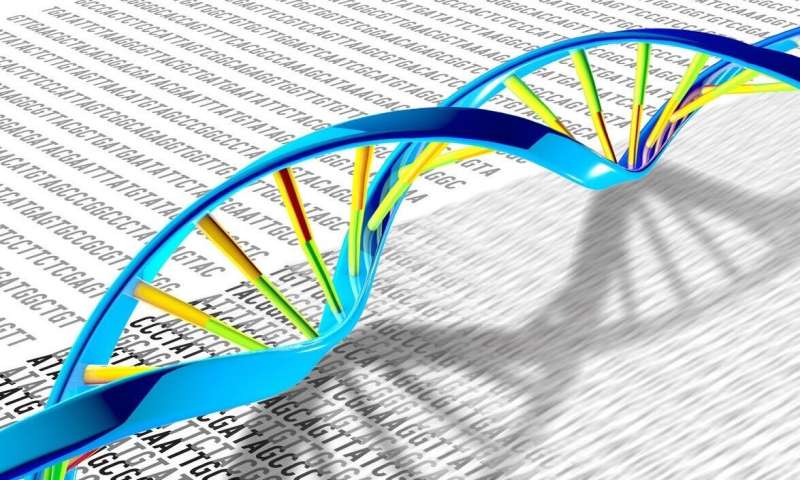Researchers identify mechanism controlling DNA repair

Deoxyribonucleic acid (DNA), is the macromolecule that holds all hereditary and genetic information. Continuously under assault, alterations and damage to DNA can lead to many different health issues, including cancer. DNA is highly regulated within cells, where multiple mechanisms are at play to repair and protect its integrity. Scientists are still investigating these mechanisms to fully comprehend how these DNA repair processes are managed. Moffitt Cancer Center researchers recently identified a new mechanism that controls DNA repair. Their findings were published in the journal Cell Death & Differentiation.
DNA receives insults and is damaged by many different types of sources, including ionizing radiation (IR), oxygen radicals as well as errors made during the DNA replication process. "Mammalian cells are continuously bombarded by DNA damaging insults which threaten cell viability and genomic integrity," explained Patsy McDonald, Ph.D., associate member in the Department of Cancer 糖心视频iology at Moffitt. These types of insults can cause replication fork collapse and double-stranded breaks within the DNA that can lead to cell death, or genetic alterations that may result in tumor development. Fortunately, cells have evolved multiple highly coordinated mechanisms to repair DNA damage to ensure continued growth, replication and cell survival. Alternatively, other mechanisms come into play to eliminate cells with too much damage.
Previously Moffitt researchers in the lab of Derek Duckett, Ph.D., senior member and Chair of the Department of Drug Discovery at Moffitt, collaborated with Duke University to demonstrate that chronic stress-induced 尾2-adrenergic-尾arrestin-1 signaling pathway provokes genomic alterations by promoting the degradation of the protein p53. In the current study, the researchers performed experiments to determine if the protein 尾arrestin1 (尾arr1) plays any additional role in the repair of DNA damage. They discovered that 尾arr1 interacts with the protein 53BP1 via a multiprotein complex. 53BP1 is known to be involved in the repair of double-stranded DNA breaks. The interaction between the two proteins causes 53BP1 to be targeted for protein degradation, thereby reducing its ability to repair DNA. Importantly, the researchers showed that mice lacking 尾arr1 survived longer following IR treatment than normal control mice. This demonstrates that loss of 尾arr1 expression is associated with resistance to the toxic effects of radiation treatment.
"These studies suggest that pharmacological blockade of the 尾arr1-53BP1 signaling cascade provides a novel strategy for developing therapeutic agents with radiation protection properties through enhanced repair of IR-induced DNA double-stranded breaks," explained Duckett.
There are currently several drugs in development that may offer protection against IR; however, these agents target factors other than the DNA breaks themselves. "We anticipate that pharmacologically mimicking the 尾arr1 knockout phenotype would act as an effective countermeasure to IR and may also augment the efficacy of the current molecules under investigation," said McDonald.
More information: Ainhoa Nieto et al, 尾arrestin-1 regulates DNA repair by acting as an E3-ubiquitin ligase adaptor for 53BP1, Cell Death & Differentiation (2019).



















